SAP DevOps
Filter By
Browse By
- SAP Analytics and AI
- SAP Application Development and Integration
- All SAP Application Development and Integration
- SAP ABAP
- SAP ABAP Development Tools
- SAP ABAP Test Cockpit
- SAP API Management
- SAP BAPI
- SAP Basis
- SAP BRF
- SAP Business Application Studio
- SAP CMS
- SAP Design Studio
- SAP Development Tools
- SAP DevOps
- SAP EAI
- SAP EDI
- SAP Extension Suite
- SAP Fiori
- SAP Fiori Elements
- SAP Integration Suite
- SAP Low Code Application Development
- SAP Low Code Automation
- SAP Netweaver
- SAP Release Management
- SAP UI5
- SAP Web Application Server
- SAP Web IDE
- SAP Business Process Management
- SAP Center of Excellence
- SAP CIO
- SAP Customer Experience
- SAP Data and Data Management
- All SAP Data and Data Management
- SAP BW
- SAP BW/4HANA
- SAP Crystal Reporting
- SAP Data Archiving
- SAP Data Center
- SAP Data Governance
- SAP Data Integration
- SAP Data Migration
- SAP Data Quality
- SAP Data Services
- SAP Data Strategy
- SAP Data Visualization
- SAP Data Warehouse Cloud
- SAP DMS
- SAP Document Control
- SAP EIM
- SAP ETL
- SAP ETL Tools
- SAP HANA
- SAP HANA Administration
- SAP HANA Deployment Infrastructure
- SAP HANA Studio
- SAP Master Data
- SAP Master Data Governance
- SAP MDM
- SAP Enterprise Architect
- SAP Enterprise Asset Management
- SAP ERP
- SAP Finance
- All SAP Finance
- SAP Accounting
- SAP AR AP
- SAP Asset Accounting
- SAP Billing Systems
- SAP BPC
- SAP BRIM
- SAP Cash Management
- SAP Central Finance
- SAP Controlling
- SAP COPA
- SAP Cost Center Accounting
- SAP e-invoicing
- SAP FICO
- SAP Finance Automation
- SAP Financial Closing Cockpit
- SAP Financial Consolidation
- SAP Financial Planning
- SAP FX Risk
- SAP General Ledger
- SAP Global Tax Management
- SAP Hyperion
- SAP Order to Cash
- SAP Payment Processing
- SAP Profitability Analysis
- SAP Rebate Management
- SAP S/4HANA Finance
- SAP Universal Journal
- SAP Governance Risk and Compliance
- SAP Human Capital Management
- SAP Intelligent Technologies
- SAP Platform and Technology
- All SAP Platform and Technology
- SAP Business Technology Platform
- SAP Cloud Connector
- SAP Cloud Integration Platform
- SAP Cloud Migration
- SAP Cloud Platform
- SAP Cloud Providers
- SAP Cloud Strategy
- SAP Container Platform
- SAP Digital Asset Management
- SAP Digital Integration Hub
- SAP Digital Signature
- SAP HANA Enterprise Cloud
- SAP HEC
- SAP Hyperscalers
- SAP Infrastructure
- SAP Messaging
- SAP Smart Forms
- SAP Quality and Testing
- SAP Security
- SAP Spend Management
- SAP Supply Chain Management
- All SAP Supply Chain Management
- SAP APO
- SAP Asset Management
- SAP Business Network
- SAP Digital Manufacturing Cloud
- SAP Digital Twin
- SAP EWM
- SAP IBP
- SAP Inventory Management
- SAP Label Printing
- SAP Logistics
- SAP Manufacturing
- SAP Manufacturing Automation
- SAP MES
- SAP MII
- SAP MM
- SAP MRO
- SAP MRP
- SAP Order Management
- SAP Plant Maintenance
- SAP PLM
- SAP Production Planning
- SAP S&OP
- SAP SD
- SAP SPM
- SAP Supply Chain Planning
- SAP Track and Trace
- SAP Transportation Management
- SAP System Administration
What is SAP DevOps?
Today’s technology space is defined by rapid application rollouts, upgrades, and updates to meet growing business demand to be agile, innovative, and competitive. The landscape is also characterized by an interconnected network of SAP and non-SAP software that needs to function in tandem. Agile and DevOps approaches can transform software change management in a big way with software development teams delivering change faster and more frequently, along with automation enabling testing and deployment to keep pace with rapid development.
DevOps for SAP builds upon the principles of agile development by emphasizing collaboration, openness, and automation for delivering new features and services with speed and flexibility. Limited accountability, visibility, and satisfaction are the results of traditional IT development and delivery methods that often involve separate departments working independently. However, in DevOps for SAP, eliminating departmental barriers and creating a versatile team that consistently communicates with each other is the focus. This results in collaboration between Development, QA, Operations, and the business side, and fosters effective communication, a sense of ownership, and trust. The ultimate objective is to establish a smooth and uninterrupted workflow for integrating, delivering, deploying, and enhancing services.
SAPinsider’s report on Change Management and Testing in SAP found that while the traditional waterfall model dominates for SAP ERP Central Component (SAP ECC) or SAP Business Suite (37% vs. 28%), Agile and DevOps are starting to make inroads within SAP teams (43% plan to roll them out and 38% plan to roll out DevOps orchestration tools).
SAP teams, used to multi-year development projects followed by years of maintenance, must now adapt to this rapid, multi-modal development world. Many SAP teams struggle, leading to subpar application quality, suboptimal business value, security and compliance issues, business disruption, project delays, and budget overruns.
SAP teams need a suitable SAP-specific solution, with the capability to connect SAP to external continuous integration/continuous delivery (CI/CD) tools for non-SAP software. Several DevOps tools are available to accelerate workflows and enable CI/CD from ServiceNow, Microsoft Azure DevOps, and Rev-Trac; there is also open-source software such Jira, Jenkins, and GitLab.
These tools include change requirements management, source code, version control, and configuration management, among other things. Several of these tools can work across SAP and non-SAP and offer several features to enable DevOps.
- Service Management: ServiceNow enables SAP change tickets to be stored and managed with the tickets for other systems. It’s possible to create an integration between ServiceNow and the SAP development environment using an SAP DevOps solution. DevOps for SAP orchestrates and synchronizes approvals across multiple development tracks while updating status in ServiceNow as change progresses through the pipeline.
- Agile Backlog Management: An agile tool like Jira can enable the management of user stories as the business requirements change, with the SAP DevOps platform ensuring SAP development stays in sync with the current priorities in Jira, supporting reporting on status, Kanban boards, and traditional agile retrospective reporting such as burn down charts.
- Automated Testing: By integrating SAP development through a DevOps automation platform, it’s possible to keep SAP testing aligned with non-SAP testing. Testing automation tools from vendors such as Panaya ensure that testing results are verified across pipelines, preventing the deployment of change until everything passes testing requirements.
- Pipeline Integration: Many parts of the development cycle – approving code, release to quality assurance, and ultimately deployment to preproduction and production – are part of the integrated pipeline. With DevOps tools, there is full visibility of all software development through standard tools and greater efficiency resulting from standardized processes.
Why Adopt DevOps for SAP?
With customer expectations continuously rising as digital transformations pick up pace, businesses need to be agile and flexible enough to adapt to these changes or risk losing relevance. This is particularly true for traditional software Application Lifecycle Management (ALM) methods that are manual and lack transparency. DevOps allows us to update and enhance SAP systems and effectively respond to growing business demands. DevOps for SAP enables organizations to deliver new products, features, and services to their customers while minimizing risks. DevOps practices in the SAP development lifecycle can enable significant enhancements in software delivery holistically. Organizations can streamline process implementation for innovation and technical rehabilitation with reduced effort and minimized risk. With process automation in a DevOps framework, the need for manual intervention is eliminated and risk is reduced. Organizations can use automation to redirect valuable development resources towards addressing business challenges and innovation, and to seamlessly integrate SAP development into broader software delivery pipelines.
DevOps empowers IT to swiftly adapt to evolving market conditions and meet customer expectations. This ensures that IT remains highly responsive and delivers solutions that truly address the demands of the market and end users. With DevOps, organizations can free themselves from traditional SAP release cycles and transition to a Continuous Integration/Continuous Delivery (CI/CD) approach as deploying changes becomes easy and SAP systems gain enhanced agility and responsiveness.
Join SAPinsider to access opportunities for networking and engagement in the dynamic SAP ecosystem. As a member, you will have access to a wealth of valuable resources and content tailored to SAP technologies and best practices like the latest research reports, articles, webinars, and events that will keep you informed and ahead of the curve.SAPinsider membership grants you exclusive access to in-depth analyses, expert insights, and practical guidance that will empower you to navigate the ever-evolving SAP landscape with ease. SAPinsider membership will enable you to remain one step ahead and harness the latest trends, innovations, and strategies to drive your own powerful digital transformations, optimize your SAP investments, and unlock business success.
534 results
-

Secure Cloud Transformation
Published: 27/April/2023
Reading time: 3 mins
Cloud security and secure cloud transformation has a lot of touchpoints, both within different security functions and capabilities, as well as in interaction with developer teams and security teams in the business units. So, there is a lot of continuous facilitation and bringing people together. Ultimately, with the way the cloud works and modern CI/CD…
-

Troubleshoot the Three SAPSprint Root Error Categories for Server-Based Printing on Windows
Published: 29/October/2009
Reading time: 17 mins
A failed printout can delay or disrupt important meetings or cause you to miss deadlines. See how to avoid printer failures when using SAPSprint by analyzing the three most common types of errors. Also find answers to common SAPSprint issues in the SAPSprint FAQs. Key Concept Processing in SAPSprint involves generating print data via the...…
-

Uncover New Insight into Your Customers with mySAP CRM Analytics
Published: 15/August/2006
Reading time: 27 mins
Find out how mySAP CRM Analytics, a group of tools offered with mySAP CRM 2005 and SAP NetWeaver Business Intelligence to help you optimize your customer data. Learn about the mySAP CRM extraction mechanism and cross-application analysis tools you can use with your data. Then, explore the standard tool sets available, including customer analytics, product...…
-
-

SAP Showcases New AI Customers Across APAC
Published: 06/February/2025
Reading time: 3 mins
During SAP’s FY2024 earnings call, strong cloud revenue growth, particularly in the Asia Pacific and Japan region—attributed to the increased adoption of AI in 50% of deals—was highlighted, showcasing the company’s commitment to embedding 400 AI use cases by 2025 and emphasizing the significant impact of Business AI on various organizations throughout the region.
-

How to Setup Demand Planning in SAP Advanced Planning and Optimization
Published: 21/May/2020
Reading time: 21 mins
SAP Advanced Planning and Optimization, demand planning allows a business to perform forecasting of their materials while considering all the factors that affect the demand. Demand planning is periodic and contains multi-step processes such as data gathering, statistical analysis, reviewing market intelligence reports, and performing adjustments against budgeted forecast to drive material requirements planning. SAP…
-

Transformation with SAP S/4HANA Means Evolving and Learning
Published: 28/October/2021
Reading time: 10 mins
As SAP S/4HANA customers across every industry vertical undergo digital transformation, changes in the digital technology landscape such as cloud and artificial intelligence (AI), the evolution of consumerism, and disruptions caused by the pandemic, are creating make-or-break opportunities. An organization with insight into how the market is changing, and how its products are being consumed,…
-

Industrial Sector: How Leaders are Driving Change
Published: 12/August/2022
Reading time: 1 mins
Leaders in the industrial sector have differing priorities when it comes to change from leaders in other industries.
-
-

Chevron and Deloitte Conquer the Art of the Possible
Published: 23/February/2022
Reading time: 6 mins
Companies operate in a global landscape where market conditions can change quickly. Thus, it’s critical to utilize technology that enables the ability to pivot when required. For Chevron, a legacy ERP infrastructure fraught with customizations slowed the company from innovating at a competitive pace. Through a collaborative project with Deloitte, Chevron focused on simplification and…
-

mySAP CRM Analytics Harnesses SAP NetWeaver BI Analytical Capabilities
Published: 01/February/2007
Reading time: 25 mins
mySAP CRM Analytics, a group of tools offered with mySAP CRM and SAP NetWeaver BI, can help you optimize your company’s customer data. Learn about the mySAP CRM extraction mechanism and delivered analysis tools you can use with your data. Then, explore the standard tool sets available, including customer analytics, product analytics, sales and service...…
-

SAP Unveils Business Data Cloud: A Unified, AI-Powered Future for Enterprise Data
Published: 14/February/2025
Reading time: 4 mins
SAP’s research reveals that 40% of organisations struggle with data quality and governance, prompting the launch of SAP Business Data Cloud, a robust, fully managed SaaS solution designed to unify SAP data and integrate third-party systems, enhancing decision-making through reliable, context-rich insights and advanced AI capabilities.
Become a Member
Unlimited access to thousands of resources for SAP-specific expertise that can only be found here.
Upcoming Events
Related Vendors
Your request has been successfully sent


